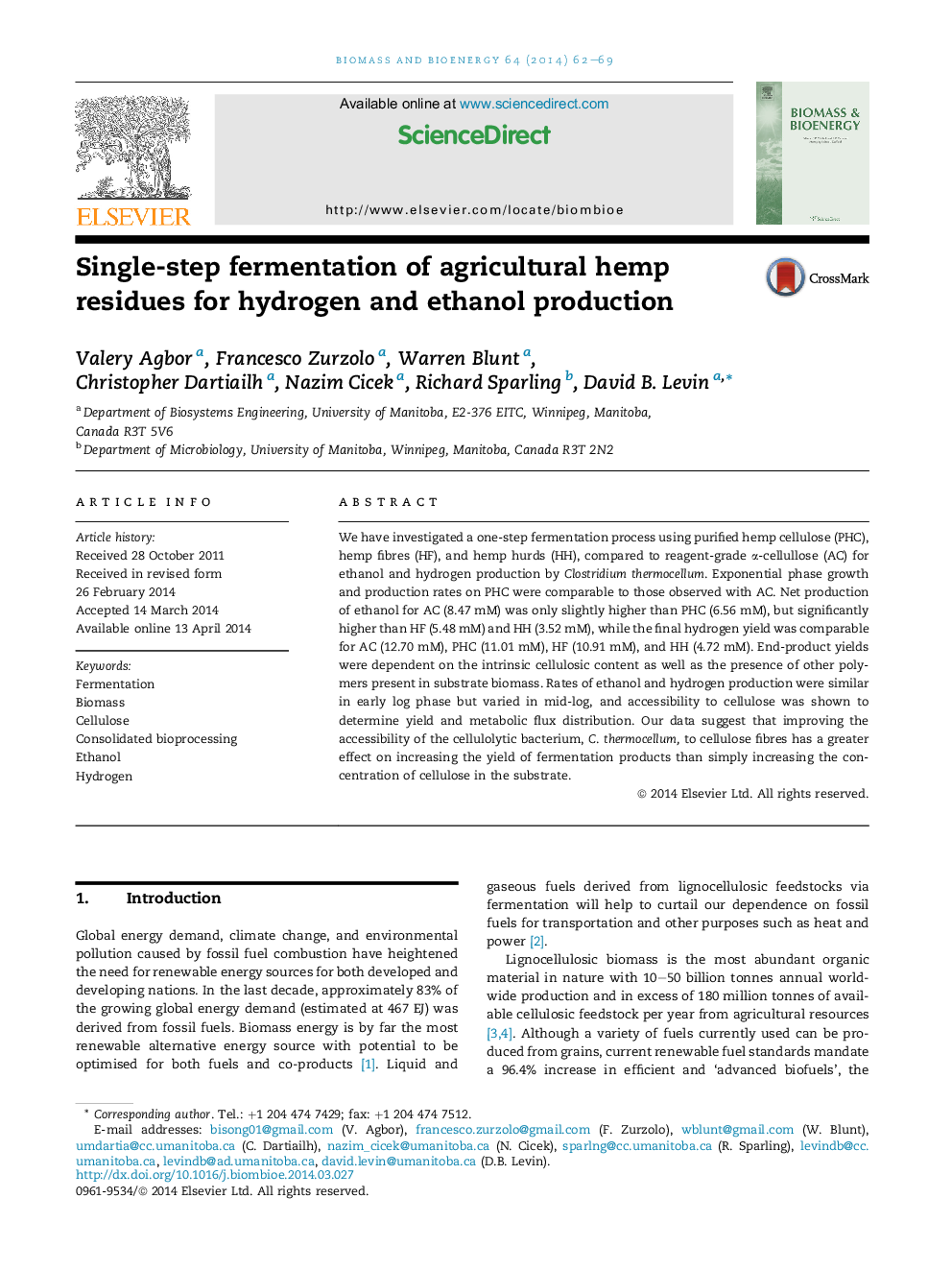| Article ID | Journal | Published Year | Pages | File Type |
|---|---|---|---|---|
| 676874 | Biomass and Bioenergy | 2014 | 8 Pages |
•Hemp residues were used as substrates for fermentation by Clostridium thermocellum.•End-product yields were dependent on the intrinsic cellulose content of substrate.•Accessibility of bacterium to cellulose was reflected in rates/flux distribution.•Improving accessibility had a greater effect on increasing yield of end-products.•Increasing amount of raw substrate didn't affect yield as increased accessibility.
We have investigated a one-step fermentation process using purified hemp cellulose (PHC), hemp fibres (HF), and hemp hurds (HH), compared to reagent-grade α-cellullose (AC) for ethanol and hydrogen production by Clostridium thermocellum. Exponential phase growth and production rates on PHC were comparable to those observed with AC. Net production of ethanol for AC (8.47 mM) was only slightly higher than PHC (6.56 mM), but significantly higher than HF (5.48 mM) and HH (3.52 mM), while the final hydrogen yield was comparable for AC (12.70 mM), PHC (11.01 mM), HF (10.91 mM), and HH (4.72 mM). End-product yields were dependent on the intrinsic cellulosic content as well as the presence of other polymers present in substrate biomass. Rates of ethanol and hydrogen production were similar in early log phase but varied in mid-log, and accessibility to cellulose was shown to determine yield and metabolic flux distribution. Our data suggest that improving the accessibility of the cellulolytic bacterium, C. thermocellum, to cellulose fibres has a greater effect on increasing the yield of fermentation products than simply increasing the concentration of cellulose in the substrate.
